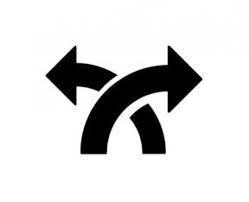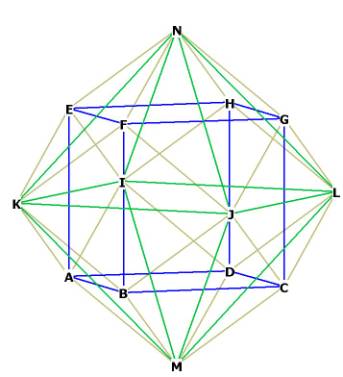|
(2017
premidterm assignment) Model Student Midterm answers 2017 (Index) Essay 1: Compare, contrast, and evaluate Narratives of the Future |
 |
Katie
Morin
10/10/2017
Destiny Defined: Analyzing Narratives of the Future
As someone who has yet to study the genre of futuristic literature, I was
surprised to discover just how complex the genre truly is. Works of the future
are multifaceted and can generally be grouped under one of three storylines:
creation/apocalypse, evolution, and alternative futures. While these are just
the three primary narratives of futuristic literature, these groups are not
entirely exclusive of one another, and it is not uncommon to notice elements
from one storyline present in another. As the semester progresses, I hope to
gain a deeper understanding of each of the three storylines, and a newfound
appreciation for a genre that is relatively new to me.
The creation/apocalypse narrative has a linear timeline, with a clear
beginning and end. This is largely attributed to Judeo-Christian ideology, which
brings to us the concepts of Alpha/Omega, beginning/end, and Genesis/Revelation.
According to our course’s website, as a storyline, this linear “model conforms
to Aristotle (Poetics VII) that a plot or narrative must have ‘a beginning, a
middle, and an end.’” It is a straightforward timeline which most people have
some level of familiarity with. However, in some instances, this linear model
can become a bit more complex as it can appear somewhat cyclical—for example,
certain aspects from “the beginning” or Creation reappear during “the end” or
the Apocalypse. As discussed in class, a prime example of this is Genesis’s Tree
of Life also making an appearance in the book of Revelation.
When
considering the Bible, Genesis marks the beginning of Creation, while Revelation
both begins the formation of a dystopia (the Apocalypse), and later in chapters
21-22, the beginning of a utopia: Heaven. A utopia is a society where everything
appears to be running smoothly, and all of its members are seemingly
happy/content. In contrast, as defined by our course’s website, a dystopia is a
“society opposite from a utopia, a utopia
gone dysfunctional, or the world just before an apocalypse or ‘left behind’
after one.” In works of the future, dystopias appear to be far more common than
utopias. A prime example of a dystopian/apocalyptic society can be seen in
Octavia Butler’s Parable of the Sower.
In it, the story’s protagonist, Lauren, finds the world around her
self-destructing—the government is corrupt, water is scarce, fire is rampant,
and violence has her world in ruins. It is the start of the apocalypse, the
beginning of the end, whether Lauren is ready for it or not.
In contrast, the second type of futuristic storyline, the evolutionary
narrative, appears to emphasize free will and adaptability. Only the strong
survive, and evolution is necessary in order to stay alive. Although
Parable of the Sower falls under the
creation/apocalypse narrative, Lauren herself exhibits characteristics seen in
the evolutionary narrative. The world as she knows it is ending, but she takes
it upon herself to evolve/adapt to her new normal. She begins to form Earthseed,
her own religion, and Lauren repeats over and over that “God is Change”—she is
ultimately able to save herself by evolving as an individual. Lauren also serves
as an example of our course’s definition of evolution (evolution = change +
continuity), as indicated by Karin Cooper’s midterm, “The Alternative Evolution
of the Apocalypse” (2015). Cooper writes that while the group Lauren creates is
new, Earthseed still resembles the community in which she was raised. Cooper
argues that Lauren’s formation of a new group still falls “within the bounds of
the evolution narrative because while the community she starts has similarities
to the one she came from, it does have changes that make it more able to survive
in the new environment in which it was founded.” While she still maintains
certain aspects of the life she once led, Lauren must adapt and evolve in order
to make it in her post-apocalyptic world.
“Stone Lives” by Paul Di Filippo exemplifies the evolutionary narrative in a
more obvious way, where the protagonist, Stone, is blinded, then given a new set
of bionic eyes, and introduced to a new world of technology. In order to survive
the post-apocalypse, he must learn to adapt/evolve to his new surroundings, much
like Lauren does in Parable.
The third and final of the three narratives, alternative future fiction, is one we have not yet covered, but I am looking forward to learning more about, as my knowledge of science fiction is largely restricted to films and television programs, not literature. As the semester progresses I hope to not only grasp a deeper understanding of the alternative future subgenre, but all three narratives collectively—their similarities, their differences, and the characteristics that make each storyline unique.
 |
 |
 |
